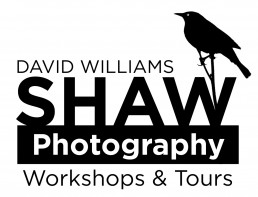
As I’ve been sorting through my images from the past couple of photo workshops I’ve led, I’ve noticed a reoccurring theme in some of my favorite wildlife images – they aren’t all close ups.
In fact, the images I’ve liked the most, are frequently the opposite. They are photos of animals in their environment; some hybrid between a wildlife and a landscape shot. Some of these were composed out of necessity, the animal was simply far away. But for others, I purposely stepped or zoomed back to show a larger scene. Either way, they work, and serve as reminder that you don’t need to be on top of the animal (physically or optically) to make a solid wildlife photograph.
Over the years I’ve been leading photography workshops, I’ve noticed that visiting wildlife photographers are often looking for the tight portrait shots. They want a brown bear looking straight the camera, a close up of a bear catching a salmon in the air, or the tight headshot of a Dall Sheep ram. Frequently they want these images so badly that they will crop in (and ruin) an already excellent image.
This summer, I watched one client working on some images he’d made earlier in the trip. It was an image of a pair of Dall’s Porpoises bow riding our boat as we motored through Resurrection Bay near Seward. The un-cropped image was near-perfect, in my opinion. It showed the two porpoises in the lower right of the frame, the mountains across the bay as backdrop, and in the foreground on the left, the bow of the boat, and splashing water. It was the perfect shot to show the experience, the place, the animals, and their behavior. In short, the complete story of our encounter.
As I watched, he selected the crop tool and cut out everything but the backs of the porpoises! I waved my hands, stopped him, and told him to pull that right back out. It wasn’t that he didn’t have a good sense of composition, it was simply that he was preoccupied with what he thought a good wildlife shot entailed.
Which leads me to my own photography. Like my workshop participant, I’ve fallen into that trap myself. I’ve failed to tell the bigger story going on, as I try to get the shot I thought I needed. Sometimes the situation warrants a tight shot, sometimes, it doesn’t. But most often, a given scene provides both close and wide compositional options. Don’t limit yourself based on your preconceived notions and keep your mind open to all the opportunities presented.
Here are a few examples from my own work, when a wider scene worked better than a tight shot.
What do you think?








You must be logged in to post a comment.